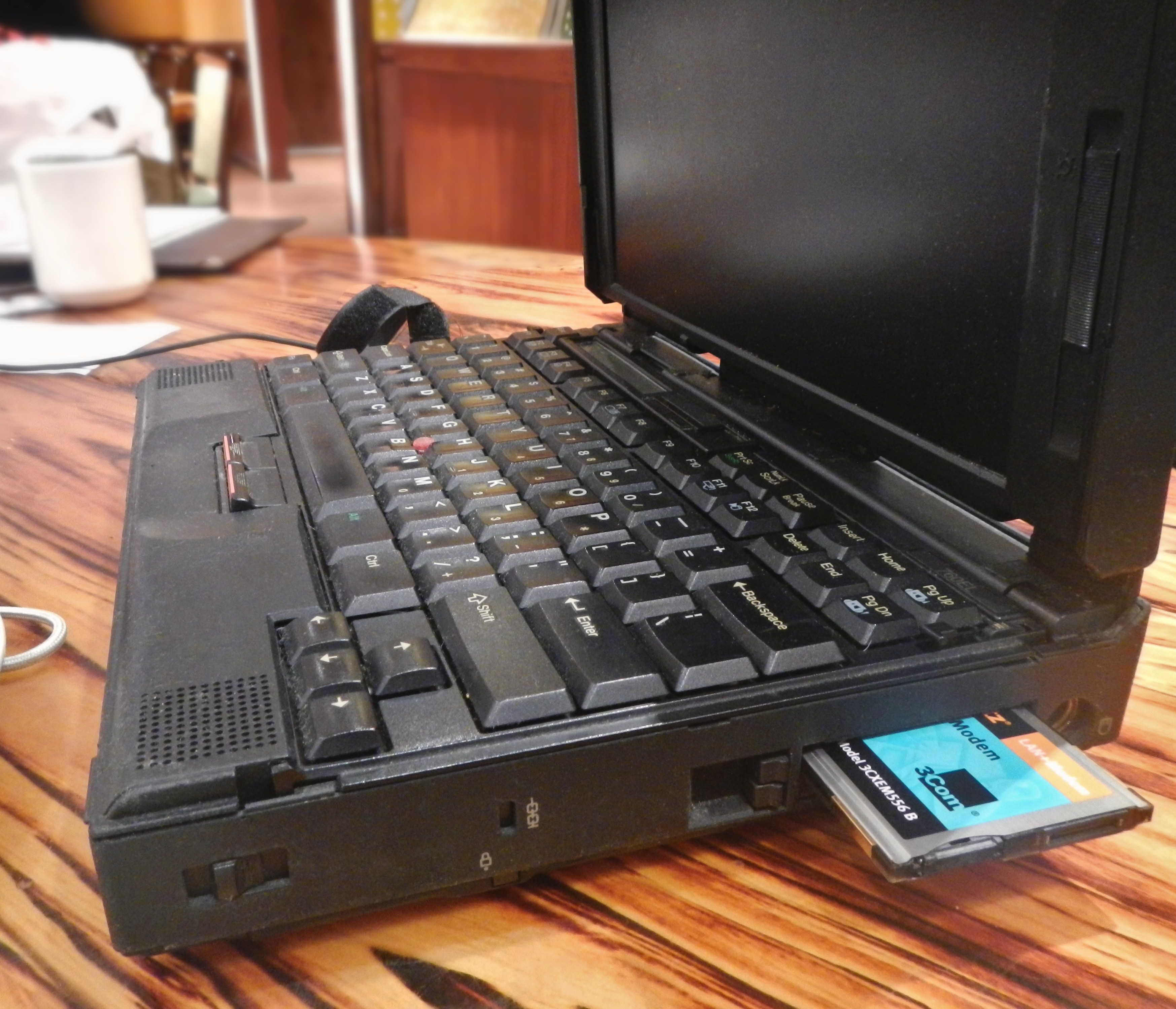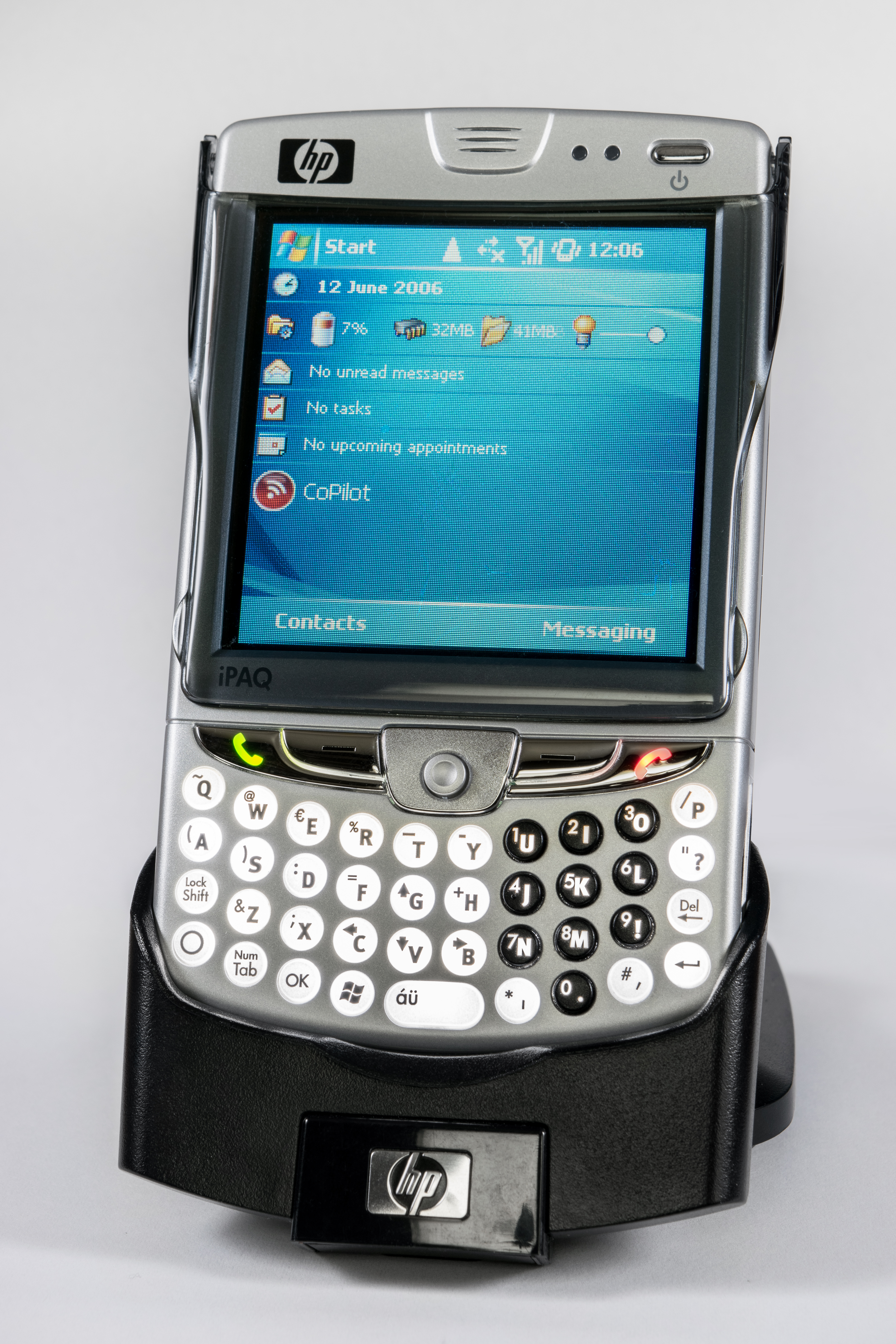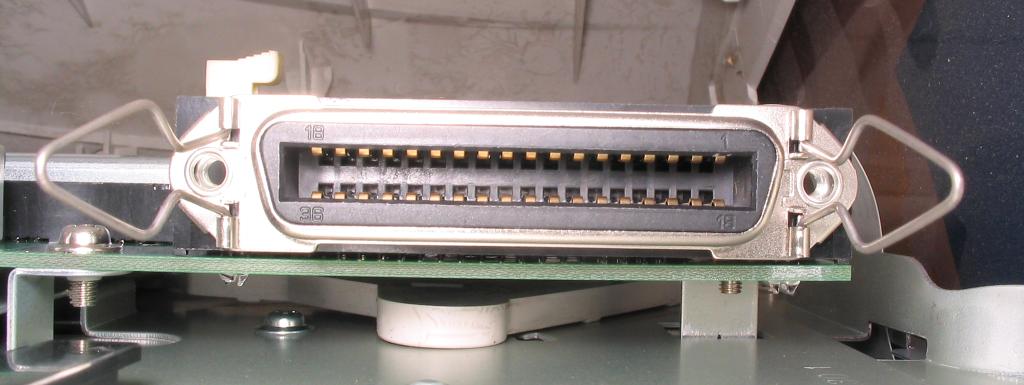|
Contura International
The Contura was a line of notebook computers produced by Compaq. Released in 1992, the Contura was Compaq's first attempt at making an affordable, entry-level laptop computer. Contura series The main Contura series included models 3/20, 3/25, 3/25c, 4/25, 4/25c, 4/25cx, 400, 400C, 400CX, 410, 410C, 410CX, 420C, 420CX, 430C, and 430CX. These were standard-size notebooks, not ultra-portable subnotebook computers. The "X" designation denoted an active matrix screen. 3/20 * 386SL running at 20 MHz * Display: VGA monochrome * RAM: 2 MB * 40 MB or 84 MB hard disk * External trackball attached to the side of the laptop 3/25c * 386SL running at 25 MHz * Display: VGA color * RAM: 4 MB * 80 MB or 120 MB hard disk * External trackball attached to the side of the laptop 4/25 * 486SL running at 25 MHz * Display: VGA monochrome * RAM: 4 MB * 120 MB or 200 MB hard disk * External trackball attached to the side of the laptop 4/25c * 486SL running at 25 MHz * Display: VGA col ... [...More Info...] [...Related Items...] OR: [Wikipedia] [Google] [Baidu] |
Compaq
Compaq Computer Corporation (sometimes abbreviated to CQ prior to a 2007 rebranding) was an American information technology company founded in 1982 that developed, sold, and supported computers and related products and services. Compaq produced some of the first IBM PC compatible computers, being the second company after Columbia Data Products to legally reverse engineer the IBM Personal Computer. It rose to become the largest supplier of PC systems during the 1990s before being overtaken by Dell in 2001. Struggling to keep up in the price wars against Dell, as well as with a risky acquisition of DEC, Compaq was acquired for US$25 billion by HP in 2002. The Compaq brand remained in use by HP for lower-end systems until 2013 when it was discontinued. Since 2013, the brand is currently licensed to third parties for use on electronics in Brazil and India. The company was formed by Rod Canion, Jim Harris, and Bill Murto, all of whom were former Texas Instruments senior managers. ... [...More Info...] [...Related Items...] OR: [Wikipedia] [Google] [Baidu] |
PCMCIA
The Personal Computer Memory Card International Association (PCMCIA) was a group of computer hardware manufacturers, operating under that name from 1989 to 2009. Starting with the PCMCIA card in 1990 (the name later simplified to ''PC Card''), it created various standards for peripheral interfaces designed for laptop computers. History The PCMCIA (Personal Computer Memory Card International Association) industry organization was based on the original initiative of the British mathematician and computer scientist Ian H. S. Cullimore, one of the founders of the Sunnyvale-based Poqet Computer Corporation, who was seeking to integrate some kind of memory card technology as storage medium into their early DOS-based palmtop PCs, when traditional floppy drives and harddisks were found to be too power-hungry and large to fit into their battery-powered handheld devices. When in July 1989, Poqet contacted Fujitsu for their existing but still non-standardized SRAM memory cards, and Intel ... [...More Info...] [...Related Items...] OR: [Wikipedia] [Google] [Baidu] |
Compaq Laptops
Compaq Computer Corporation (sometimes abbreviated to CQ prior to a 2007 rebranding) was an American information technology company founded in 1982 that developed, sold, and supported computers and related products and services. Compaq produced some of the first IBM PC compatible computers, being the second company after Columbia Data Products to legally reverse engineer the IBM Personal Computer. It rose to become the largest supplier of PC systems during the 1990s before being overtaken by Dell in 2001. Struggling to keep up in the price wars against Dell, as well as with a risky acquisition of DEC, Compaq was acquired for US$25 billion by HP in 2002. The Compaq brand remained in use by HP for lower-end systems until 2013 when it was discontinued. Since 2013, the brand is currently licensed to third parties for use on electronics in Brazil and India. The company was formed by Rod Canion, Jim Harris, and Bill Murto, all of whom were former Texas Instruments senior managers. ... [...More Info...] [...Related Items...] OR: [Wikipedia] [Google] [Baidu] |
Friends
''Friends'' is an American television sitcom created by David Crane and Marta Kauffman, which aired on NBC from September 22, 1994, to May 6, 2004, lasting ten seasons. With an ensemble cast starring Jennifer Aniston, Courteney Cox, Lisa Kudrow, Matt LeBlanc, Matthew Perry and David Schwimmer, the show revolves around six friends in their 20s and 30s who live in Manhattan, New York City. The series was produced by Bright/Kauffman/Crane Productions, in association with Warner Bros. Television. The original executive producers were Kevin S. Bright, Kauffman, and Crane. Kauffman and Crane began developing ''Friends'' under the working title ''Insomnia Cafe'' between November and December 1993. They presented the idea to Bright, and together they pitched a seven-page treatment of the show to NBC. After several script rewrites and changes, including title changes to ''Six of One'' and ''Friends Like Us'', the series was finally named ''Friends''. Filming took place at Warner ... [...More Info...] [...Related Items...] OR: [Wikipedia] [Google] [Baidu] |
Hewlett-Packard
The Hewlett-Packard Company, commonly shortened to Hewlett-Packard ( ) or HP, was an American multinational information technology company headquartered in Palo Alto, California. HP developed and provided a wide variety of hardware components, as well as software and related services to consumers, small and medium-sized businesses ( SMBs), and large enterprises, including customers in the government, health, and education sectors. The company was founded in a one-car garage in Palo Alto by Bill Hewlett and David Packard in 1939, and initially produced a line of electronic test and measurement equipment. The HP Garage at 367 Addison Avenue is now designated an official California Historical Landmark, and is marked with a plaque calling it the "Birthplace of 'Silicon Valley'". The company won its first big contract in 1938 to provide test and measurement instruments for Walt Disney's production of the animated film ''Fantasia'', which allowed Hewlett and Packard to formally esta ... [...More Info...] [...Related Items...] OR: [Wikipedia] [Google] [Baidu] |
IPAQ
The iPAQ is a discontinued Pocket PC and personal digital assistant which was first unveiled by Compaq in April 2000. HP's line-up of iPAQ devices included PDA-devices, smartphones and GPS-navigators. A substantial number of devices were outsourced from Taiwanese HTC corporation. The name was borrowed from Compaq's earlier iPAQ Desktop Personal Computers. Following Hewlett-Packard's acquisition of Compaq, the product has been marketed by HP. The devices use a Windows Mobile interface. In addition to this, there are several Linux distributions that also operate on some of these devices. Earlier units were modular. Sleeve accessories were released called "jackets", which slide around the unit and add functionality such as a card reader, wireless networking, GPS, and extra batteries. Later versions of iPAQs have most of these features integrated into the base device itself, some including GPRS mobile telephony (SIM card slot and radio). History The iPAQ was developed by Co ... [...More Info...] [...Related Items...] OR: [Wikipedia] [Google] [Baidu] |
Compaq C-Series
The Compaq C series was a series of Handheld PCs running on Windows CE 2.0, manufactured by Compaq from 1998. Description The C series replaced the Aero line of handheld PCs. It was succeeded, as with other HPCs manufactured by Compaq and HP, by the iPAQ line of Pocket PCs. The C series featured an integrated 33.6kbit/s modem. For wireless data transfer, it sported an IrDA The Infrared Data Association (IrDA) is an industry-driven interest group that was founded in 1994 by around 50 companies. IrDA provides specifications for a complete set of protocols for wireless infrared communications, and the name "IrDA" also ... port. An upgrade to Windows CE 2.11 could be purchased from Compaq for US$109. Targus Inc. manufactured a leather portfolio case for the C series, under the Compaq brand. References C Windows CE Windows CE devices Computer-related introductions in 1998 {{compu-mobile-stub ... [...More Info...] [...Related Items...] OR: [Wikipedia] [Google] [Baidu] |
Compaq Contura Aero 4-33C (5069156701)
Compaq Computer Corporation (sometimes abbreviated to CQ prior to a 2007 rebranding) was an American information technology company founded in 1982 that developed, sold, and supported computers and related products and services. Compaq produced some of the first IBM PC compatible computers, being the second company after Columbia Data Products to legally reverse engineer the IBM Personal Computer. It rose to become the largest supplier of PC systems during the 1990s before being overtaken by Dell in 2001. Struggling to keep up in the price wars against Dell, as well as with a risky acquisition of DEC, Compaq was acquired for US$25 billion by HP in 2002. The Compaq brand remained in use by HP for lower-end systems until 2013 when it was discontinued. Since 2013, the brand is currently licensed to third parties for use on electronics in Brazil and India. The company was formed by Rod Canion, Jim Harris, and Bill Murto, all of whom were former Texas Instruments senior managers. ... [...More Info...] [...Related Items...] OR: [Wikipedia] [Google] [Baidu] |
16550 UART
The 16550 UART (universal asynchronous receiver/transmitter) is an integrated circuit designed for implementing the interface for serial communications. The corrected -A version was released in 1987 by National Semiconductor. It is frequently used to implement the serial port for IBM PC compatible personal computers, where it is often connected to an RS-232 interface for modems, serial mice, printers, and similar peripherals. It was the first serial chip used in the IBM PS/2 line, which were introduced in 1987. The part was originally made by National Semiconductor. Similarly numbered devices, with varying levels of compatibility with the original National Semiconductor part, are made by other manufacturers. A UART function that is register-compatible with the 16550 is usually a feature of multifunction I/O cards for IBM PC-compatible computers and may be integrated on the motherboard of other compatible computers. Replacement of the factory-installed 8250 UART was a common up ... [...More Info...] [...Related Items...] OR: [Wikipedia] [Google] [Baidu] |
RS-232
In telecommunications, RS-232 or Recommended Standard 232 is a standard originally introduced in 1960 for serial communication transmission of data. It formally defines signals connecting between a ''DTE'' (''data terminal equipment'') such as a computer terminal, and a ''DCE'' (''data circuit-terminating equipment'' or ''data communication equipment''), such as a modem. The standard defines the electrical characteristics and timing of signals, the meaning of signals, and the physical size and pinout of connectors. The current version of the standard is ''TIA-232-F Interface Between Data Terminal Equipment and Data Circuit-Terminating Equipment Employing Serial Binary Data Interchange'', issued in 1997. The RS-232 standard had been commonly used in computer serial ports and is still widely used in industrial communication devices. A serial port complying with the RS-232 standard was once a standard feature of many types of computers. Personal computers used them for connection ... [...More Info...] [...Related Items...] OR: [Wikipedia] [Google] [Baidu] |
IEEE 1284
IEEE 1284 is a standard that defines bi-directional parallel communications between computers and other devices. It was originally developed in the 1970s by Centronics, and was widely known as the Centronics port, both before and after its IEEE standardization. History In the 1970s, Centronics developed the now-familiar printer parallel port that soon became a ''de facto'' standard. Centronics had introduced the first successful low-cost seven-wire print head, which used a series of solenoids to pull the individual metal pins to strike a ribbon and the paper. A dot matrix print head consists of a series of metal pins arranged in a vertical row. Each pin is attached to some sort of actuator, a solenoid in the case of Centronics, which can pull the pin forward to strike a ribbon and the paper. The entire print head is moved horizontally in order to print a line of text, striking the paper several times to produce a matrix for each character. Character sets on early printers ... [...More Info...] [...Related Items...] OR: [Wikipedia] [Google] [Baidu] |
PC Card
In computing, PC Card is a configuration for computer parallel communication peripheral interface, designed for laptop computers. Originally introduced as PCMCIA, the PC Card standard as well as its successors like CardBus were defined and developed by the Personal Computer Memory Card International Association (PCMCIA). It was originally designed as a standard for memory-expansion cards for computer storage. The existence of a usable general standard for notebook peripherals led to many kinds of devices being made available based on their configurability, including network cards, modems, and hard disks. History The PCMCIA 1.0 card standard was published by the Personal Computer Memory Card International Association in November 1990 and was soon adopted by more than eighty vendors. It corresponds with the Japanese JEIDA memory card 4.0 standard. SanDisk (operating at the time as "SunDisk") launched its PCMCIA card in October 1992. The company was the first to introduce a writ ... [...More Info...] [...Related Items...] OR: [Wikipedia] [Google] [Baidu] |








